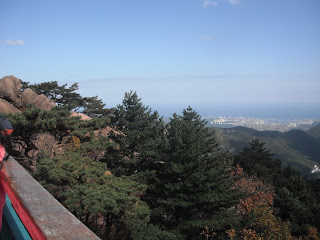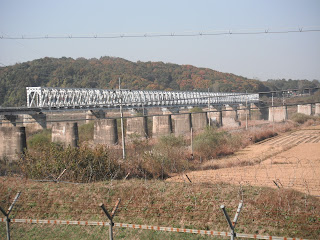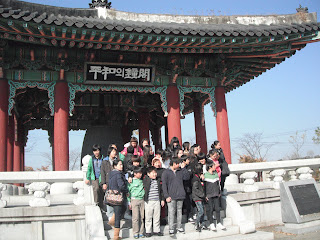Original post June 26, 2010
If you are going to Phuket, you should check out Jamie Monk's blog (link below).
We went to eat at Sam Chong Seafood Restaurant in Phang Nga Bay, on yet another of his great recommendations!
We ordered a grilled seabass with the spicy condiments on the side so that the kid with us could also eat the fish. It was grilled with plain salt but with the fish scales intact. Our immediate reaction was that it was going to be too fishy for us. As it transpired, it was grilled to perfection -- fully cooked and yet still retaining all its juices. It was so fresh, two of us preferred eating it by itself without the accompanying condiments. This was clearly a sea catch and not a farmed fish. As such, it had no muddy taste which is almost the mark of the bulk of the seabasses sold in Singapore.
Our neighbouring table ordered a deep-fried garoupa in garlic and pepper which also looked very good but which we did not have the opportunity to try.
The squid was grilled with only a dash of salt and pepper. Again, it was so fresh and juicy that every bite just brought so much pleasure -- eaten on its own, without the accompanying condiments.
The kangkong (or morning glory, as they call it) was a little "old". Cooking style was okay, but nothing to rave over.
By the way, if you are driving up from Phuket Island, just follow the signs pointing to the direction of Phang Nga then turn right at the Samchong junction which will take you to Ban Samchong. No need to go through Khok Kloi then Kalai before reaching the Samchong junction, which is quite a detour. If you're driving south from Phang Nga, you also just head in the direction of Phuket Island until you reach the Samchong junction, in which case, you turn left.
Finally, you will find the restaurant very well signposted, except that the signs were all in Thai. :-)
We also took up Jamie's recommendation and hired a longtail boat and went out to James Bond Island and Koh Panyee and went through a mini cave, but which nevertheless had some interesting limestones formations. The hire cost us 1500 BAHT for a three-hour ride. We got caught in heavy rain and thought we must be crazy to trust the boatmen who assured us that there would be no rain although the sky looked quite overcast. When we got to the stretch of sea between James Bond Island and Koh Panyee, it was quite comforting to see that we weren't the only crazy tourists out in the choppy waters that afternoon. But it was a good ride, we had fun, and we enjoyed ourselves -- getting wet under our torn and flapping disposable raincoats, notwithstanding.
http://jamie-monk.blogspot.com/2009/02/restaurant-tip-samchong-seafood-phang.html












































